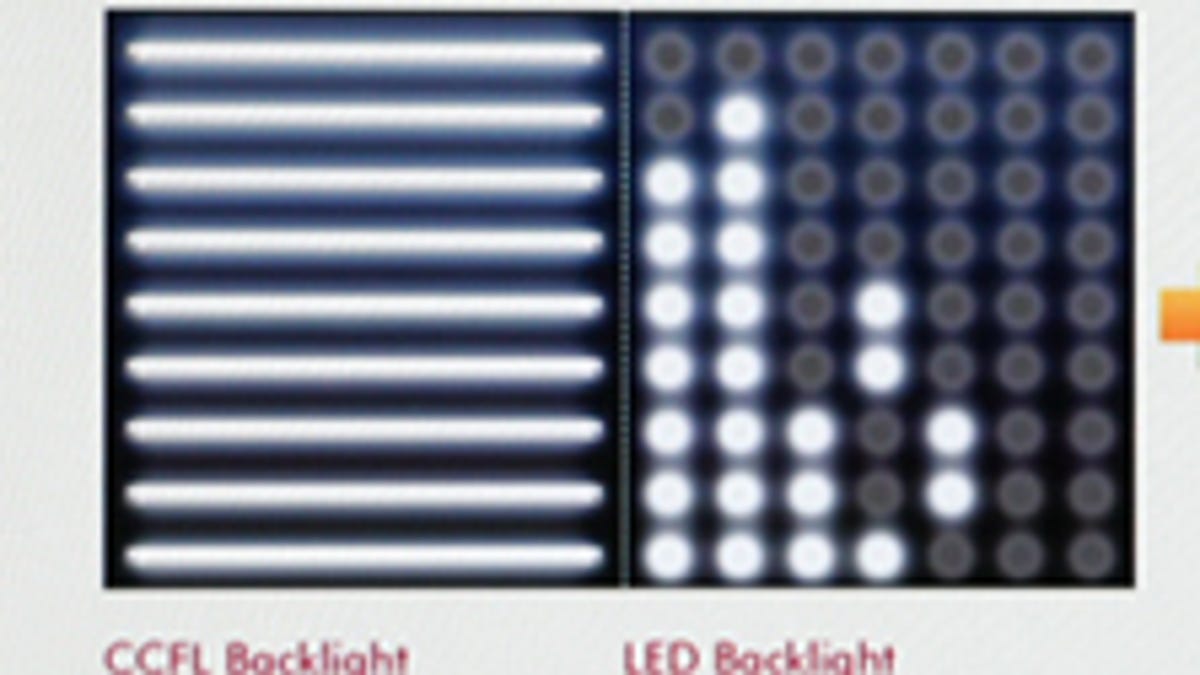LED-backlit LCDs battle for 'best' title
Three high-end LED-backlit LCD HDTVs are coming to stores soon to vie for the title of "Best LCD ever."

Now that we've published our
Sony and Samsung will also be joined by LG in the backlit-LCD race, despite apparent lack of reader interest in that company's
First off, it's worth noting that each of the three sets use a technology colloquially called "local dimming," where the individual LEDs behind the screen can be dimmed or turned off as needed. It's this technology that adds some weight to each company's claim of a 1,000,000:1 contrast ratio (a nice round number, no?) When part of the screen goes dark and another is bright, standard fluorescent LCD backlights must rely on the LCD panel itself to block out the light and create dark areas. The result is the less-than-stellar black-level performance for which many LCDs have been noted.
Local dimming allows LED-backlit sets to produce extremely deep black levels, which are the most important ingredient in HDTV picture quality. The downside, at least in the case of the Samsung we reviewed, was "blooming," where a bright object on a dark background would evince a dim halo of light instead of pure blackness.
That's because the dimming isn't local enough; there aren't enough LEDs themselves to correspond with all 1920x1080 pixels of the TVs' 1080p native resolution, so there's some spillover along the edges. Samsung did not divulge exactly how many LEDs were used in its 46-inch model, and neither will Sony for its displays, but LG did. The 47LG90 has "1,536 individual light emitting-diodes arranged into 128 sectors," according to the company. How much that number affects blooming is still an open question.
The biggest difference between the three companies' displays is price. The
Sony's LEDs are arranged in groups of four, with two green and one each red and blue. The advantage, according to the company, is "significantly elevated color purity." A demo I saw of Sony's new LED-based models last summer looked impressive indeed, and CNET contributor Kevin Miller, for his part, said "the blacks on the new XBR8 series look to be the best of any LCD that I have seen to date by a good margin."
So we're back to the standard question, as one reader put it: "Is it even possible that the RGB LEDs could make the ($5,000) Sony almost 50 percent better than the Samsung ($3,500)?" The answer will have to wait. I'm receiving my review sample of the KDL-55XBR8 in early October, according to Sony, and LG for its part has promised to deliver its 47LG90 to CNET's lab as soon as possible. Naturally, we'll keep our Samsung sample around for as long as we can to perform our standard side-by-side comparison. Until then, all we can do is speculate.
What do you think? Will Sony's Triluminous technology beat the blooming and provide superior color and off-axis viewing compared with the Samsung? Even if it does, will it be worth the extra dough? What about dark horse LG? Let us know in the comments section.

